WHY CHOOSE US
♦
Childtrack Parent Portal
Infant/Preschool Care
Afterschool Care
Summer Day Camp
Live The EAC Experience!
LATEST BLOG
♦

Parenting Styles from Around the World
Children need to grow in a society that reflects their culture, background, and beliefs. With that in mind, we are looking at parenting styles from around the world.
Parents in a multitude of different nations around the world have varying styles of parenting. These parental styles also influence the children from these countries.
Parents in every country and culture have their own parenting styles. As a result, children in these countries grow up with different ideas of what they want from the world and their parents.

Different types of parenting styles
Different countries have different parenting styles, and it is important to explore them to improve our understanding of the best ways.
In one country, parents walk their children home from school together, while in another country has a policy that a parent should never be seen with children in public while they are still young. The parenting style of these parents depends on their background, country, and culture, from Japan, where mothers are expected to be the primary caretakers of children up to 12 years old, to Muslim countries like Egypt, where parents have the right to choose when they send their children off to school.
- Authoritarian parenting: Authoritarian parenting is used in China, Russia, South Korea, Greece, and Turkey, where parents have complete control over what their children do and can punish them if they don’t obey their rules.
- Authoritative parenting: Authoritative parenting is used in Canada, the United States of America, Norway, Sweden, and Slovenia. Parents follow a set of rules but ask their children for input before making decisions.
- Permissive parenting– This approach is common in Italy, Denmark, Argentina, and Brazil, where parents do not get involved with their children’s lives and decisions except if serious problems are happening at home or school.
- Helicopter Parenting– In this system, parents take control of every activity a child does from day one of birth.
While some cultures are very strict, others are more relaxed. This is because parenting styles and customs vary between countries and regions.

Parenting styles are different across the world, and they are a reflection of the culture of that particular country. For example, in India, children have to perform different chores and help around the house. As a result, the parents in this country don’t delegate their children’s tasks but instead, involve them in household work and teach them independence. This leads to a more responsible child who has the chance to become an independent adult later on.
Conclusion
One of the four different parenting styles is followed around the world. If you’re a parent, you need to carefully scrutinize your parenting style, which will shape your children’s future and brain development from an early stage.

Creative Art Activities For Kids
Creative activities are essential for a kid’s development. They help them hone their intellect and learn new skills they can use in everyday life. In addition, parents can use creative activities with kids to keep them entertained for hours.
In this article, we have jotted down a list of creative activities for kids that will keep them engaged and entertained for hours without. So, if you want your children to grow healthy and happy, give these a try!
Children like to be entertained. They are not prisoners but instead restless explorers. They act out, experiment, and explore their world without any inhibition.

Playing board games can be an excellent way to spend time with your kids. Reading books or telling stories is another fun activity that involves parents and helps them bond with their kids. All these activities will create memories and provide parents and children with a sense of closeness they may not otherwise have in this digital age.
Creative Activities for Kids will help them explore their curiosity and imagination in an open-ended way, providing the freedom they need to be their person.
Parents can choose many creative activities for kids:
- Drawing.
- Coloring with make-up.
- Making a piece of jewelry.
- Handcrafting – varied options in this list will give you plenty of ideas to keep your child busy with different crafts throughout the year.
Some parents complain that their children are bored when they go on family vacations or have too much time at home on weekends because they have exhausted all the possibilities for entertainment at home.
Creating an immersive experience for them with these activities will ensure a happy day, which is what all parents want!
Creativity is an essential ingredient in the recipe for successful, happy children. It can be used to develop their intelligence and increase their abilities in other areas of their life. Creative classes and activities teach kids new skills, develop their intellect, and build their confidence to try new things. The best part about these activities is that they can be done anywhere!
There are many such creative activities that kids can do to express themselves and have fun. Here are just a few ideas:
Painting: This is a classic activity that can be done with any materials you have around the house. Give your kids some paper and paint, and let them go to town!
Sculpting: This can be done with clay, Play-Doh, or junk around the house. Let your kids use their imaginations to create whatever they can think of.
Drawing: Like painting, all you need for this activity is paper and pencils. You can also use crayons, markers, or even pens. Let your kids draw whatever they want, and encourage them to be as creative as possible.
Handicrafts: Pick up whatever item you can and try to get them to make the best out of waste, or you could get your kids to do origami and other fun handicrafts.
Conclusion
there is area plethora of creative activities for kids which can be done with minimal supervision and tools. These activities can help kids develop their motor skills and enhance their creativity and problem-solving ability. And best of all, they’re fun! So, get creative and start doing some of these activities with your kids today.

The Benefits Of Arts And Crafts For Children
According to the National Curriculum, art and crafts are essential building blocks for developing a child’s brain and personality. It also develops a sense of creativity. Art and craft is one exercise that helps engage, inspire, and enhance children’s skills and critically develop their minds based on their needs. It is one of the main reasons for schools to involve arts and crafts in their curriculum.
Indulging in art and crafts is one of the best ways for children to express their skills and creativity. Apart from this, other benefits of introducing arts and crafts to children are mentioned below in this article. In addition, many types of research and studies have shown that arts and crafts can help children develop motor skills, boost their self-esteem and improve their mental health to a great extent. So, suppose you’re a parent looking for a fun activity, not only for your children to have fun but also to get educational benefits, you ought to get them involved in some arts and crafts classes. In that case, it is best to consider this activity.
The benefits of different forms of arts and crafts
From painting and drawing to sculpting and crafting, many options are available under the arts and crafts umbrella. Of course, you can also try out painting, crafts, origami, drawing, and many others- your child might discover a rare hidden talent in the process!

Indulging in crafts also provides an excellent way for children to prevent shying away from making new friends. If your child has trouble mingling with people, they should join art classes and socialize with other children there. Pottery classes are also an excellent option for children to explore the world of arts and crafts.
Crafts are fun and teach a child that the fruits of their hard work are always sweeter. The joy in their eyes when they proudly show their art or craft and the following words of approval from a parent also bring a child closer to a parent and improve their confidence.
It always takes a significant amount of time to create any work of art or craft. However, if children are prompted to complete them, they learn to patiently finish their work, another significant benefit of introducing them to art and crafts. It enhances their patience level and builds a great deal of confidence, which will also help them in the future.
Conclusion
To sum up, these are the benefits of Arts and crafts:
- Improves Confidence and Self-Esteem
- Fine Motor Skills
- Improves Patience
- Improves Concentration
- Helps to build Planning and Foresight abilities
- Improves their organizational Skills
- They become better at self-expression and managing feelings
So, what are you waiting for? There are plenty of reasons to encourage your child to get involved in arts and crafts. And who knows, they might end up loving it!

Types Of Child Care Programs
How do parents choose the best kinds of child care for their families when there are so many options available? Your needs for child care rely on a variety of factors, including your budget, the number of hours required, and the age of your child. A family with young children would require a different kind of care than one with older children, who would only require care during the summer. Some types of childcare programs are:
Center-based programs
It must possess a license and, according on your province or area, must employ trained personnel. The provincial or territory has defined requirements and criteria for centers’ health and safety.
Home based-programs
Programs run from homes don’t require licenses. However, some home-based childcare providers opt to be accredited and overseen by regional or provincial childcare at-home agencies. These organizations are frequently run by regional governments. Home-based programs offer a more adaptable, less regimented atmosphere and may be right around the corner or next door.
Unlicensed home-based programs
Although unlicensed home-based programs are frequently equally as effective as those that are, one’s kid isn’t really protected by provincial laws, such as those that deal with playground equipment requirements and fire safety. Visiting during business hours and speaking with parents of children currently enrolled is the greatest way to know your child will receive high-quality care. You must take the same actions that a licensing body would, such as requesting a public police background investigation and verifying that the caretaker has undertaken precautionary measures in the childcare environment.
Part time programs
When you simply require care for a certain period of the day or the week, part-time programs are occasionally offered. Some families choose a mix of various care options. Kindergarten or nursery school may be an option for you if you have a lot of flexibility or work part-time. A babysitter or nanny may be shared by some households.
Preschool programs
Children in preschool programs often range in age from 3 to 5 years old. They frequently only have limited hours of operation outside of the school year. Prekindergarten programs, also known as preschool programs, are provided for free or at a reduced cost in several states.
School-age Programs
Your school-age child has a variety of before- and after-school care alternatives. This kind of care may be provided through family daycare facilities and childcare homes. Before- and after-school programs may also be provided by recreation centers, houses of worship, and youth organizations.

Vacations and summer childcare programs
Although they are occasionally offered to preschool-aged children, vacations and summer childcare programs are mostly for school-aged children. These programs offer a range of activities, including swimming, theatre, structured sports, and arts & crafts. Local parks and leisure departments, neighborhood groups, and daycare facilities frequently organize vacation and summer programs. Your school-age child’s summer care may also be available through a family daycare provider.

Key Practices For High-Quality Early Childhood Inclusion
The inclusion of children suffering from disabilities in early childhood programs is associated with positive outcomes for both the children and their families. When done well, inclusion provides opportunities for all children to learn and grow together in the least restrictive environments.
There are some critical practices for high-quality early childhood inclusion that researchers have identified. These practices are the core of the Inclusive Classroom Profile (ICP), which is a field-tested observational tool for children ages 2-5.
Today’s article is adapted from the ICP manual and will introduce you to some of the 12 practices with real-world classroom examples.

Adaptations
Irrespective of disabilities, children can gain access to physical space, materials, and equipment. Through adult scaffolding strategies, children are assisted in gaining access to and using materials in purposeful ways when required. For example, teachers and assistants arrange classroom areas and materials in ways accessible to all children. However, the physical space, materials, and equipment are organized dynamically to encourage children’s social interactions and independence intentionally.
Adult Involvements
The classroom allows children to take part in activities and routines with peers while the adults can plan and implement social plays or other learning activities. They also provide scaffolding strategies to support positive, reciprocal, and sustained peer interactions between children.
Adult Guidance
Children watch adults exhibit fun while engaging with children during activities, and the children can decide on activities and playmates while adults observe children’s engagement in activities and support them.
Conflict Resolution
Adults have to set boundaries and strict rules and have to consistently communicate about the rules with the children to encourage good behavior. Sometimes adults may need to intervene and resolve conflicts among children while acknowledging their views and feelings.
Community
Adults must work together to create a classroom community where every child feels like they belong regardless of their differences; this can be accomplished by creating opportunities to assume equal roles and responsibilities.
Adult behavior
Adults must seek out opportunities to interact with the children enthusiastically and cater to the individual child’s needs to the best of their abilities. Adults should maintain a positive attitude toward children and avoid showing any negative emotions directed toward them. Adults should also avoid favoring any specific child and maintain equality among children.

Adaptation of group activities
Adults should plan more group activities to engage children as a group, which further promotes socializing behavior and allows the children to learn to work as a team and cooperate when needed. Group activities should be light, fun, and adults must adapt to the unique needs of children when planning said group activities. Each child should feel like they are a vital aspect of the team.
Family and staff partnership
Procedures should be implemented daily to create valuable communication with the parents about their children.

The Advantages of Daycare centers for Parents and Children
Parents are always skeptical of sending their kids to daycare or childcare centers. They often feel guilty about leaving their kids under others’ supervision. If you’re one of those parents hesitant to put your children at daycare, you ought to understand the benefits it offers to the kids and how it can positively impact their mental and physical development.
Before knowing the benefits of daycare centers, let’s first dive into the topic of understanding what daycare centers are and how they work!
What exactly is a daycare center?
Daycare is a place that takes care of children and toddlers who are left unattended or in the absence of their parents and guardians to revise early physical and mental development. It is one of the best options which help parents manage their work and personal life effectively.
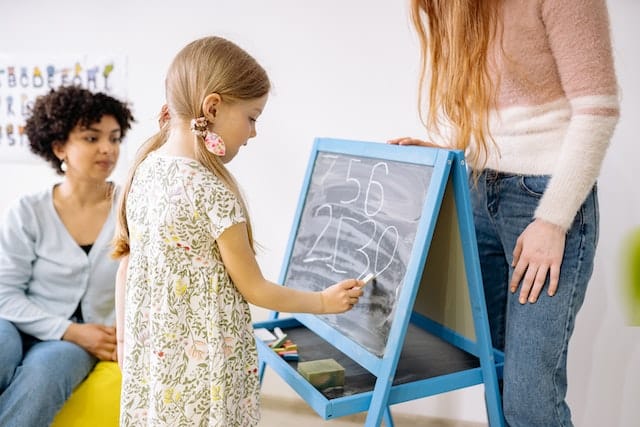
Advantages of a daycare center for children
During the early stages of a child’s development, children are filled with energy and enthusiasm, which, when not utilized effectively, can hamper their development. Therefore, on the surface level, sending your kids to daycare centers can help them build emotional, mental, social, and cognitive skills. Other benefits are mentioned below:
- Developing love for learning: Daycare centers are filled with fun activities, including hanging out with other children of the same age group and learning to develop the kind of friendships. They are also constantly engaged in activities that help them in learning.
- Socialization and interaction: Since a child gets an opportunity to interact and communicate with other kids and teachers, they will develop the skills of learning to interact and socialize without hesitation.
- Routine and discipline: There is no denying the importance of routines and discipline. If there is a disturbance in their routine, it will disturb the entire family. Hence, by admitting them to such centers, parents will be sure to create a routine or a timetable for them and follow it throughout the week. This will also help them predict what’s next and give them enough confidence.
- Better communication: A channelized environment in a day center with educated and trained teachers will help them understand the proper use of formal language. A survey conducted on sending their kids to daycare centers reveals that they were better at communicating words like please and thank you!
- Self-engagement and independence: Most toddlers and children are clingy to their parents in their early years. Although the child is never left unattended in a daycare center, it still changes their brain ability. It gives them the freedom to manage things independently, even without their parent’s help. Such children become highly independent in the future and can develop better decision-making skills.

Indoor & Outdoor Child Care Center Safety Checklist
Providing a safe environment for kids is one of the most challenging jobs. Children are scientists in creating danger out of nowhere. We have conducted deep research and have come up with ways you can protect children both inside homes and schools and outside.
Here’s how:
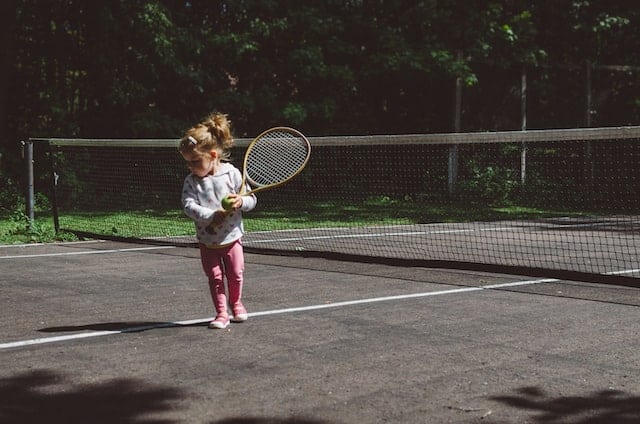
Checklist for Indoor Child Care Safety
- Train yourself with CPR and first aid training. Prepare yourself for all kinds of emergencies.
- Keep an eye on children even while doing any household or personal work.
- Teach children what goes inside the mouth and what doesn’t. You can’t always be around to check on them.
- Teach them how to use objects that can hurt. This step includes scissors and their toys. Always keep things that could act as weapons out of their reach.
- Hide any cleaners, paint removers, polishing agents, or bleach agents. Better hide your cosmetics too. We know cosmetics such as nail polish removers contain alcohol for astringent properties, and we don’t want to risk it with children.
- Check the clothing of your children. They might contain strings or attachments that could hurt. It is better don’t buy such clothes. Drawstrings are a no-no too. They could pose hazards of strangulation.
- Teach children dos and don’ts with pets. Not all pets are harmful, but it is best to be safe.
- Make their cribs and furniture safe by ensuring their working condition.
Room Access
- Don’t give access to rooms children shouldn’t enter.
- Place blocks in staircases and attach childproof gates.
- Make sharp ends of objects in a room and even possible doors childproof with protective shields or tapes.
- Place banners or sticky notes to instruct children on handling things in the room or immovable objects.
- Always close doors and cupboards.
- Keep the dishwasher, refrigerator, or washing machine closed; if they could be a threat, make sure your child can’t open them.
Play area safety
- Clean your play area always and remove any spills at once.
- Don’t clutter the play area. Involve children as you tidy up. This idea can help them learn organizational skills.
- Check your play area for possible choking toys.
- Make sure the toys are not peeling or rusting. These chemicals can hurt children. Old or damaged toys can even sport cuts and sharp edges, endangering children.
- Sanitize toys daily to prevent illnesses and odors.
- Clean their toys often. Wash stuffed animals and safety blankets often.
Checklist for Outdoor Child Care Safety
- Fence the outdoor area to prevent outside access into the yard. Make sure the fence is not climbable. Remove any equipment that can help climb and ensure there is no tree around to help.
- Check the play area for sharp objects, dirt, trash, objects that could hurt, and animal waste.
- Make use of shock-absorbing surfaces to prevent injuries from falls. Keep sand, mulch, and rubber mats handy for this purpose.
- Check for any blind spots a child can hide or get lost when you don’t notice.
- Lock away lawn and garden equipment and chemicals. Remove branches or dangling cords in the garden or anywhere.
- Make children use helmets when riding wheeled toys.
- Place slides in a shaded area or under trees to avoid heating and burning on sunny days.
- Place guard rails on any elevated platforms to prevent falls.

Careers in Child Development
Child development is necessary to ensure a better future for children and society. It needs a person who is responsible as well as efficient. To become an efficient child development worker, you should first have an interest. This job is for service-minded individuals only.
Skills and requirements
There are a lot of career options to help children. Being a school teacher is one of many options available. Soft-skill requirements require communication, creativity, patience, problem-solving, compassion, and empathy. A B.A. in Child Development is the educational qualification requirement.

Career options
Social worker
A social worker helps people face a variety of problems in everyday life. In particular, child development help children and families adjust to children-related challenges like illness, adoption, child abuse, and mental health changes. They also help parents and children to overcome the effects of divorce, addiction, or unemployment. Social workers also refer clients to other resources or intervene during emergencies like neglect and abuse. In addition, clinical social workers have special licenses to diagnose and treat mental and behavioral disorders.
Librarian
A librarian should conduct in a way the child likes to be in a library and start loving books. What may seem like a simple job is easily the job that could change the future of humanity. Hence a librarian should know how to help children in their way.
Preschool teacher
A preschool teacher helps children by teaching and caring for students of age five and younger. They need extreme patience and social skills to help children so young. They are also creative in teaching and problem-solving. They also need to identify individual child needs and address them.
Special education teacher
Special education teachers need to understand the differences between children needing special care and those not. In addition, they need professional education to deal with children having learning, mental, emotional, or physical disabilities. Therefore, the job description is to develop and adapt Individualized Education Programs (IEPs) for each student. These IEPs help them track their performance and progress.
Speech pathologist
A Speech pathologist diagnoses and treats communication and swallowing disorders by helping children improve their vocabulary and sentence structure. This career needs special education to identify the causes of language and swallowing disorders. These professionals should also work with physicians, surgeons, or psychologists to help children.
Occupational therapist
An Occupational therapist helps treat people with injuries, disabilities, or certain illnesses. This professional should assess a child’s home environment and provide improvement suggestions to help. In addition, they have to work alongside family members to develop the required models of development for the child.
Behavioral Specialist
Behavioral specialists are experts in behavioral disorders. They treat problematic behavior and develop treatment plans. Mainly, a behavioral specialist helps children improve their communication and interaction with others. They also have to work with parents to identify the root cause of behavioral problems.
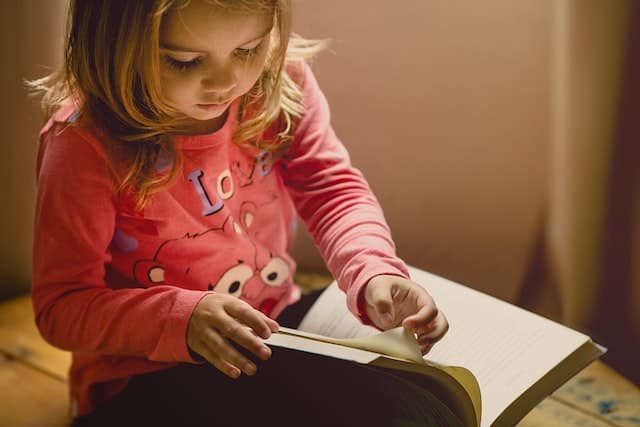
Child life specialist
Child life specialists work at children’s hospitals in particular. They have to be well-versed in finding ways to help children and families cope with their hospital experience. The hospital experience can be frightening and overpowering for children. Here a child needs as much help as they can get.
Children’s ministry leader
Children’s ministry leaders have a religious career path. They provide religious education and support for students. They must know Bible stories and how to teach them. This career helps children in making ethical decisions.

The Impact of Child Care on Young Children’s Development
The rise in a mother’s employment rate has surged the demand for childcare centers. As a result, many toddlers and children are getting informal education on social and other behavior before they even enter a formal education system. According to research conducted in 2018, nearly two-thirds of children aged 3 to 5 should have spent time in childcare centers before kindergarten. The research also states that this experience helps them in developing cognitive abilities and enhances their social and other skills to a great extent.
Detailed research was conducted on this topic. The subject, context of research, and its valuable outcome are stated below in this article.
Subject
It is a no-brainer that a child’s mind is delicate and will be subjected to various changes, impacting their thinking and decision capability. Many types of research have also been conducted on this topic stating the noticeable overall changes in their behavior. These childcare programs make toddlers and kids school ready, thus improving their cognitive skills. The quality of this research subject is scaled based on several parameters, which also involve classroom practices, the relationship between children and teachers, and also the teacher’s qualifications.
The context of research
The research conducted on the impact of childcare on the development of young children was emphasized in two different areas:
- The first phase is the introduction to early intervention programs for children at risk
- The second one includes the community childcare services
According to their study, most of the effects are based on the early intervention programs, as only a few of them moved to elementary school from preschool. However, certain studies have also indicated that these intervention programs have positively affected children’s cognitive development and academic excellence.
The second area of research also highlights the effects of the core quality of preschool development on a child’s thinking ability and emotional development. Many childcare programs were selected instead of the model programs, which were also a part of many intervention studies. Many factors like socio-economic factors, gender, ethnicity, education, maternal education, and the view of differences also affect the quality of childcare education.
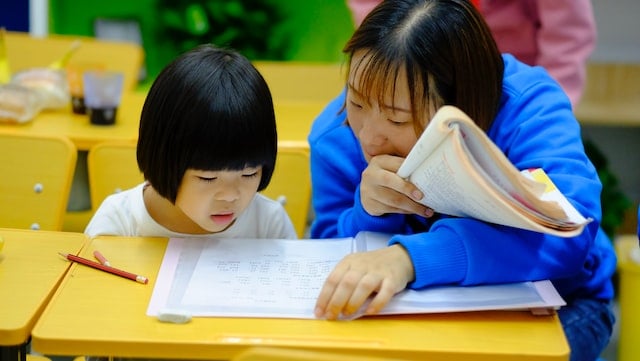
The outcome
Many types of research were conducted with preschool and elementary schooling time while keeping the effects of childcare development in mind in countries like the US, Bermuda, Sweden, and Canada. There were positive outcomes in some instances, such as enhancement in social skills, cognitive enhancement, and many more. However, the study also states that apart from children’s quality time in daycare centers, the family background also plays a significant role in their development. By studying these situations, a daycare center will create childcare programs that will help in enhancing their ability to work better for the children’s future.

The Best Craft Tools for Kids of All Ages
Are you a loving parent looking for kid-friendly tools for your children? Using kid-friendly tools is a great way to enhance a child’s hand-eye recognition and coordination. It also helps them to prepare and find a solution to their DIY problems. Since standard tools are heavy for a child’s use, these kid-friendly tools mentioned below are great for a kid’s use.
What to consider before choosing?
Before considering a kid’s tool set, it is essential to know which ones to choose based on the appropriate age. Standard tools are generally too heavy for children. Hence these form an excellent way for them to enjoy and play with! A wide variety of options are available for toddlers and adolescents.
You also need to consider the tool’s functionality – whether you choose it as a play toy or need your kid to learn something from it! Finally, it is also essential to consider the footprint of your tool and its organizing and storing options. While some options include a storage box or toolbox, others might not include the same. Hence, it is always best to consider the storage of bulky sets.
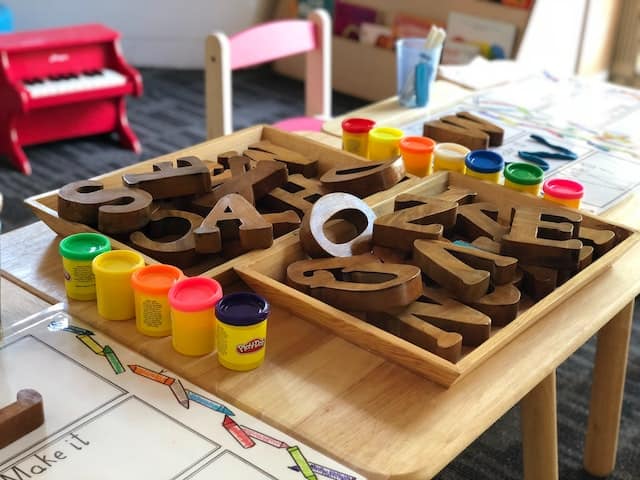
Different types of toolkits
- Wooden storage boxes: They are one of the easiest to find and also resemble a basic tool kit. In addition to this, it will also be lightweight with bolts, nuts, screws, and wheels, which will help build great sets for toddlers and adolescents.
- 16-piece kid’s toolkit: It is made of plastic and metal and has 16 pieces of different kinds of tools that are small for a kid to hold. They also have small compartments for fasteners and accessories. Although the size is miniature, it can also be used by adolescents. Goggles and gloves are also included to help kids stay safe and provide paramount safety.
- Drill and Learn toolbox: This toolbox is made of plastic, hence delivering a lightweight for easy carrying around the toolbox. It is generally made up of light-up buttons and other lightweight components, which works like a regular tool we use in reality. It also comprises several learning cards inserted into the toolbox to teach your children about letters and numbers. Hence, it provides a fun way of getting kids to learn about things.
- Junior kid’s power tools: A jackhammer is one of the best parts of this tool kit which helps in a line of toy power tools. It also comprises leaf blowers, weed trimmers, etc., which are charged by AAA batteries. It is always a nice perk to have additional tools which resemble real-life components.
- Toy workbench: it is a small bench with plastic tools recommended for kids of 3 years, just like a craftsman kit. With various nuts, bots, and other building pieces, it can also be a great option.
